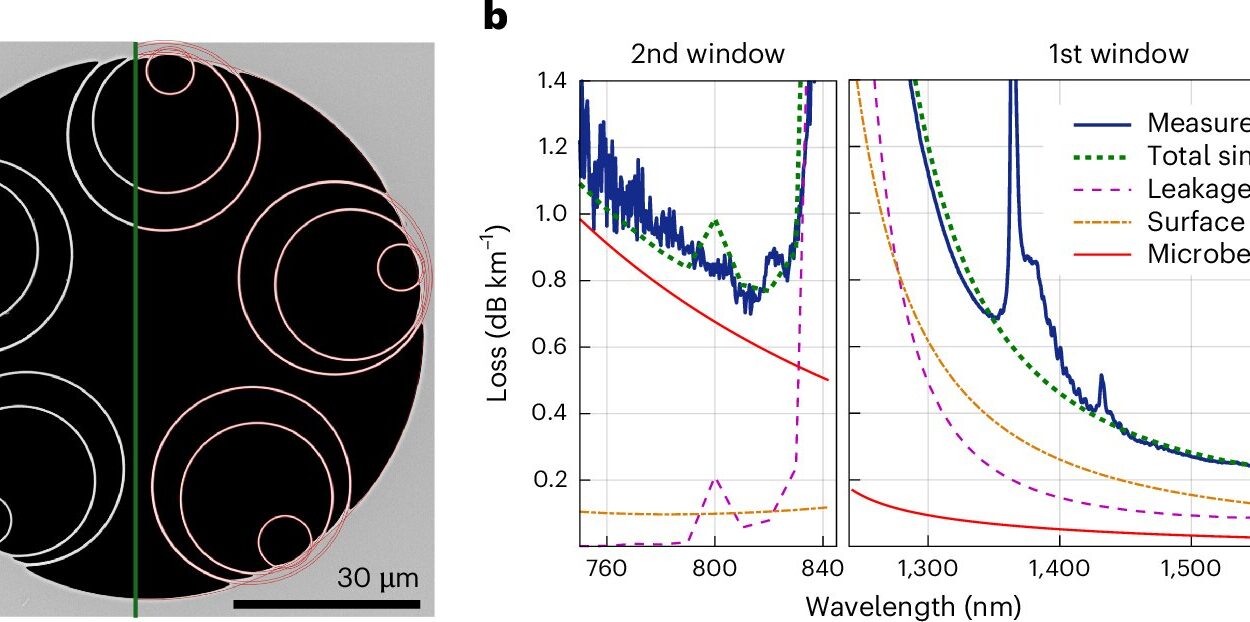There is an invisible ocean that fills the cosmos—an endless sea of vibrating energy, pulsing across the void at the speed of light. This ocean is not water, nor is it sound. It is a symphony of waves that carry the signals of stars, the whispers of atoms, the information of our world. These are electromagnetic waves: light in all its forms, from the glow of a firefly to the fury of a gamma-ray burst.
We see only a sliver of these waves with our eyes, yet they shape everything around us. They let us listen to music through a speaker, read a text message in seconds, take an X-ray of a broken bone, or gaze at distant galaxies through telescopes tuned to invisible colors. To understand electromagnetic waves is to pull back the curtain on the workings of nature—on how the universe talks to itself and to us.
So what exactly is an electromagnetic wave? How does it travel? Where does it come from? And what secrets are hidden in its spectrum—from long, lazy radio waves to tiny, energetic gamma rays? Let’s dive deep into the light-filled world of electromagnetic waves.
The Birth of a Revolution: Maxwell’s Equations
The story of electromagnetic waves begins in the 19th century, in the mind of a Scottish physicist named James Clerk Maxwell. Before Maxwell, electricity and magnetism were known, but they were treated as separate phenomena. You could build a battery or spin a magnet, but no one had fully grasped how deeply they were intertwined.
Maxwell changed everything. In a set of four elegant mathematical equations—now famous in physics—he unified electricity and magnetism into a single theory: electromagnetism. He discovered that changing electric fields create magnetic fields, and changing magnetic fields create electric fields. And in this eternal dance, a self-sustaining wave could be born.
Maxwell’s equations predicted that such waves would travel through empty space at a constant speed: the speed of light. This was no coincidence. Maxwell realized that light itself was an electromagnetic wave, and so were many other forms of radiation yet to be discovered. Suddenly, light was no longer a mystical force—it was part of a grand, coherent theory.
The Anatomy of an Electromagnetic Wave
An electromagnetic wave is like a traveling ripple in an invisible fabric. Imagine two perpendicular fields—electric and magnetic—vibrating at right angles to each other, and both moving forward through space at light speed. The electric field pushes charged particles up and down, while the magnetic field pushes them side to side. Together, they form a wave that moves like a marching band playing in perfect rhythm.
The key features of this wave are its wavelength, frequency, and amplitude.
Wavelength is the distance between two peaks of the wave—like the spacing between ocean waves. Frequency is how many waves pass a given point in one second. These two quantities are inversely related: the shorter the wavelength, the higher the frequency. Amplitude is how strong the wave is—how much energy it carries.
The energy of an electromagnetic wave depends entirely on its frequency. Low-frequency waves carry little energy. High-frequency waves carry a lot. This simple fact leads us to the spectrum of electromagnetic radiation: a continuum that stretches from gentle, gigantic radio waves to furious, subatomic gamma rays.
The Electromagnetic Spectrum: A Rainbow Beyond Vision
The electromagnetic spectrum is a vast range of waves, classified by their frequency or wavelength. Most of it is invisible to the human eye, but each region has unique properties, uses, and mysteries. Let’s journey across this spectrum, from the longest waves to the shortest, and uncover the phenomena hidden within.
Radio Waves: The Gentle Giants
At the far end of the spectrum lie radio waves—the longest and slowest of all electromagnetic waves. Their wavelengths can stretch from a few millimeters to thousands of kilometers. Radio waves are gentle giants, carrying little energy but traveling great distances. They are the bedrock of modern communication.
When you turn on a radio, tune your GPS, or connect to Wi-Fi, you are harnessing radio waves. Cell towers beam them through the air, satellites bounce them across continents, and antennas receive their whispers. The universe itself produces radio waves—pulsars, quasars, and even the remnant glow of the Big Bang emit in this range.
One remarkable fact: your brain produces weak radio waves. EEG machines can pick them up. You are, in a very real sense, a small radio transmitter.
Microwaves: Cooking and Communicating
Next on the spectrum come microwaves—waves with wavelengths between one millimeter and one meter. You probably know them best from the kitchen, where they make popcorn pop and pizza steam. But microwaves are also crucial in science and technology.
In radar, for instance, microwaves are bounced off objects to determine their position and speed. That’s how police speed guns and weather stations work. In astronomy, microwaves revealed the cosmic microwave background, a faint afterglow from the early universe, providing strong evidence for the Big Bang theory.
Microwaves heat food by agitating water molecules. The oscillating electric field makes water molecules rotate rapidly, generating friction and heat. It’s physics at work in your lunchbox.
Infrared: The Heat You Can’t See
Move up in frequency and you reach infrared radiation—just beyond the red end of visible light. Infrared waves are shorter and more energetic than microwaves, and we feel them as heat. Anything with a temperature emits infrared radiation: your body, a fire, a cup of coffee.
Night-vision goggles detect infrared light, allowing soldiers or wildlife observers to see in the dark. Infrared telescopes pierce through cosmic dust, revealing newborn stars in hidden nurseries. Remote thermometers and security systems also rely on infrared sensing.
Though invisible, infrared is all around us, quietly warming the world.
Visible Light: The Narrow Band We Call Color
A tiny sliver of the electromagnetic spectrum is visible to our eyes. It’s a narrow band, from about 400 to 700 nanometers in wavelength, yet it’s the one we know best. This is the realm of color—violet, blue, green, yellow, orange, and red. It’s where rainbows live and sunsets blaze.
Our eyes are tuned to this band because the Sun emits most of its energy here. Evolution sculpted our vision to match the light of our star. Within this band, white light is a mix of all colors, and each color corresponds to a different wavelength.
Optics—the science of light—studies how visible waves behave: how they reflect, refract, and interfere. Mirrors, lenses, fiber optics, telescopes, and cameras all manipulate visible light. And though it’s only a fraction of the spectrum, it’s the part that defines how we see the universe.
Ultraviolet: Invisible and Intense
Beyond violet lies ultraviolet (UV) radiation. Its wavelengths are shorter than visible light, and it carries more energy—enough to cause chemical reactions. UV light is both a blessing and a danger.
Sunlight includes UV rays, which stimulate vitamin D production in our skin but also cause sunburn and skin cancer. The Earth’s ozone layer filters out much of the harmful UV, shielding life on the surface.
Fluorescent materials glow under UV light, revealing details invisible to the eye. Forensic scientists use UV to detect fingerprints. Astronomers use UV telescopes to study the hottest stars and violent cosmic events.
The UV world is hidden but powerful—a realm of high energy and sharp contrasts.
X-Rays: Seeing Through Matter
As we continue to increase frequency, we arrive at X-rays. These waves are tiny in wavelength and immense in energy. They penetrate soft tissue but are absorbed by bone, making them ideal for medical imaging.
X-ray machines revolutionized medicine by letting doctors peer inside the body without surgery. But X-rays have other uses too: in airport security scanners, in materials testing, and even in art restoration, where they reveal hidden paintings beneath layers of paint.
In astronomy, X-rays pour out of black holes, neutron stars, and supernovae. NASA’s Chandra X-ray Observatory captures these high-energy emissions, showing us the universe in a completely different light.
Gamma Rays: The Final Frontier
At the extreme end of the spectrum are gamma rays—the shortest, most energetic waves known. They are produced by radioactive decay, nuclear reactions, and cosmic phenomena of unimaginable violence.
Gamma rays can destroy cells and DNA, which is why they are used to kill cancer cells in radiation therapy. They are also lethal in high doses. But in the cosmos, they offer glimpses into the most extreme events: collapsing stars, exploding supernovae, and merging black holes.
Gamma-ray bursts, or GRBs, are among the brightest explosions ever observed, releasing more energy in seconds than the Sun will emit in its lifetime. The study of gamma rays is still unfolding, offering tantalizing clues about the birth and death of the universe.
How Electromagnetic Waves Travel
Unlike sound or ocean waves, electromagnetic waves do not need a medium to travel. They can move through the vacuum of space, carrying energy across light-years. This makes them unique—and essential—for astronomy and communication.
They are generated by accelerating charged particles. When an electron vibrates or accelerates, it disturbs the electric and magnetic fields around it, creating a ripple that travels outward—a wave of light. The faster the vibration, the higher the frequency of the wave.
EM waves travel at the speed of light—about 299,792 kilometers per second in a vacuum. But in glass, water, or air, they slow down slightly, which causes them to bend or refract. This behavior explains everything from rainbows to eyeglasses to fiber-optic internet.
The Quantum Twist: Photons and Duality
Electromagnetic waves are not just waves. They are also particles—tiny packets of energy called photons. This dual nature, known as wave-particle duality, is a cornerstone of quantum mechanics.
A photon has no mass, but it carries energy and momentum. Low-frequency waves (like radio) have low-energy photons. High-frequency waves (like gamma rays) have high-energy photons. When a photon hits an atom, it can be absorbed, reflected, or cause a reaction.
The photoelectric effect—discovered by Einstein—proved that light could knock electrons off a metal surface, but only if the photons had enough energy. This revealed the quantized nature of light and earned Einstein the Nobel Prize.
Applications That Changed the World
Electromagnetic waves have transformed civilization. Radio and TV brought voices and images to billions. Cell phones, Wi-Fi, and GPS rely on EM signals. Infrared cameras see in the dark. X-rays peer inside our bodies. Gamma rays treat cancer.
Lasers, fiber optics, remote sensing, microwave ovens, solar panels—all of them manipulate EM waves. Even art, photography, and cinema are born from visible light.
In science, EM waves are our primary tools to explore the universe. Telescopes detect every part of the spectrum, revealing stars, galaxies, and the Big Bang itself. Light carries the fingerprints of atoms and the heartbeat of black holes.
Conclusion: Light Is the Language of the Universe
To ask what an electromagnetic wave is, is to ask how the universe communicates—how it transmits energy, information, and emotion across space and time. From the soothing signal of your favorite radio station to the gamma-ray death cry of a dying star, EM waves shape reality.
They are the paintbrush of the cosmos, the messenger of stars, the engine of modern life. They allow us to see, hear, connect, heal, and discover. In every beam of light is a story—of atoms, of fields, of vibration, of time.
So next time you gaze at the stars, feel the warmth of the sun, or open your phone, remember: you are surrounded by an invisible symphony, and every note is an electromagnetic wave, singing the song of the universe.






